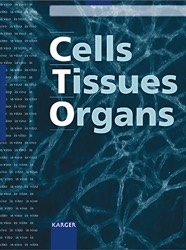NeoHybrid liver graft – proof of concept

Authors are Susanne Rohn, Jan Schroeder, Henriette Riedel, Dietrich Polenz, Katarina Stanko, Anja Reutzel-Selke, Peter Tang, Lydia Brusendorf, Nathanael Raschzok, Peter Neuhaus, Johann Pratschke, Birgit Sawitzki, Igor M. Sauer, and Martina T. Mogl.
Aim of the project was the evaluation of a new concept for in vivo tissue engineering using autologous primary human hepatocytes and hepatic progenitor cells isolated from diseased livers explanted during orthotopic liver transplantation (LTx). Cells will be isolated and infused into the spleen for repopulation of the allogeneic liver graft. The latter is serving as biological matrix for the engraftment of autologous cells. Once these cells have engrafted, it is assumed that autologous cells will repopulate the allogeneic liver, since they should have a selective advantage due to their autologous origin. It is postulated that this will lead to a neo-hybrid liver graft, reducing immunogenicity and inducing immunoregulation thus minimizing the need for extensive immunosuppression and eventually inducing operational tolerance.
We therefore developed a new rat model for combined liver and liver cell transplantation under stable immunosuppression. Immunohistochemistry demonstrated the engraftment of transplanted cells, as confirmed by fluorescence in-situ hybridization, showing repopulation of the liver graft with 15.6 % male cells (± 1.8 SEM) at day 90. The quantitative PCR revealed 14.15 % (mean ± 5.09 SEM) male DNA at day 90. Engraftment of transplanted autologous cells after combined liver and cell transplantation was achieved for up to 90 days under immunosuppression. Immunohistochemistry indicated cell proliferation, and the fluorescence in-situ hybridization results were partly confirmed by quantitative RT-PCR. This new protocol in rats appears feasible to address long-term function and eventually induction of operational tolerance in the future.

